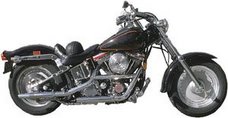Dyno Test
From Sartor Bros. in South Africa.
A test was performed in South Africa to see to what extent header coatings could reduce the surface temperatures on stock exhaust manifolds . The test was to see if the coatings would allow the vehicles to meet or be exempt from Regulation 10.25.2(b) of the Mine Health and Safety Act of 1996. A Toyota 2 ton truck running a 2L: diesel was to be used. Sartor Bros coated the test engines manifolds with Tech Line coating products.
TIt is necessary to reduce the surface temperatures as there is a significant danger of igniting gases when the equipment is use, in these huge underground mines. The test was conducted at Twistdraai Central Colliery.
The Results were as follows:
The maximum temperature of the manifold( at the exhaust flange) was 166C. ( Previously recorded 238C). This was at the steepest incline of the mine. The highest temperature on level ground was 142C. The highest exhaust branch outlet temperature was 129C.
If you convert to Fahrenheit, the drop was from 460f to 330f. Since the uncoated temperature was high enough to cause ignition of the gases this reduction is significant and would potentially allow the use of these engines in the mines.
CBC2/CBX and Compression Ratios. We are regularly asked how much additional compression can be run when one of Tech Line’s thermal barrier coatings are used on piston tops. Since the coating changes the efficiency of the combustion chamber and reduces the likelihood of entering into detonation, it is possible to run more compression.Since there are so many variables we cannot give an absolute figure. However in general you can run 1 point more in compression. We have had reports over the years that 10.5 to 10.75 is possible. It should be noted that in one instance a 302 Ford engine was built that had 12 to 1 compression and was able to be driven and raced on pump gas. One of our own employees ran a 302 Chevy engine, with a nice street cam with a nominal 12 to 1 compression and he regularly drove it to work on pump gas with no problems.
You can find more information at HTTP://www.engineceramics.com
Saturday, June 23, 2007
Subscribe to:
Post Comments (Atom)


No comments:
Post a Comment